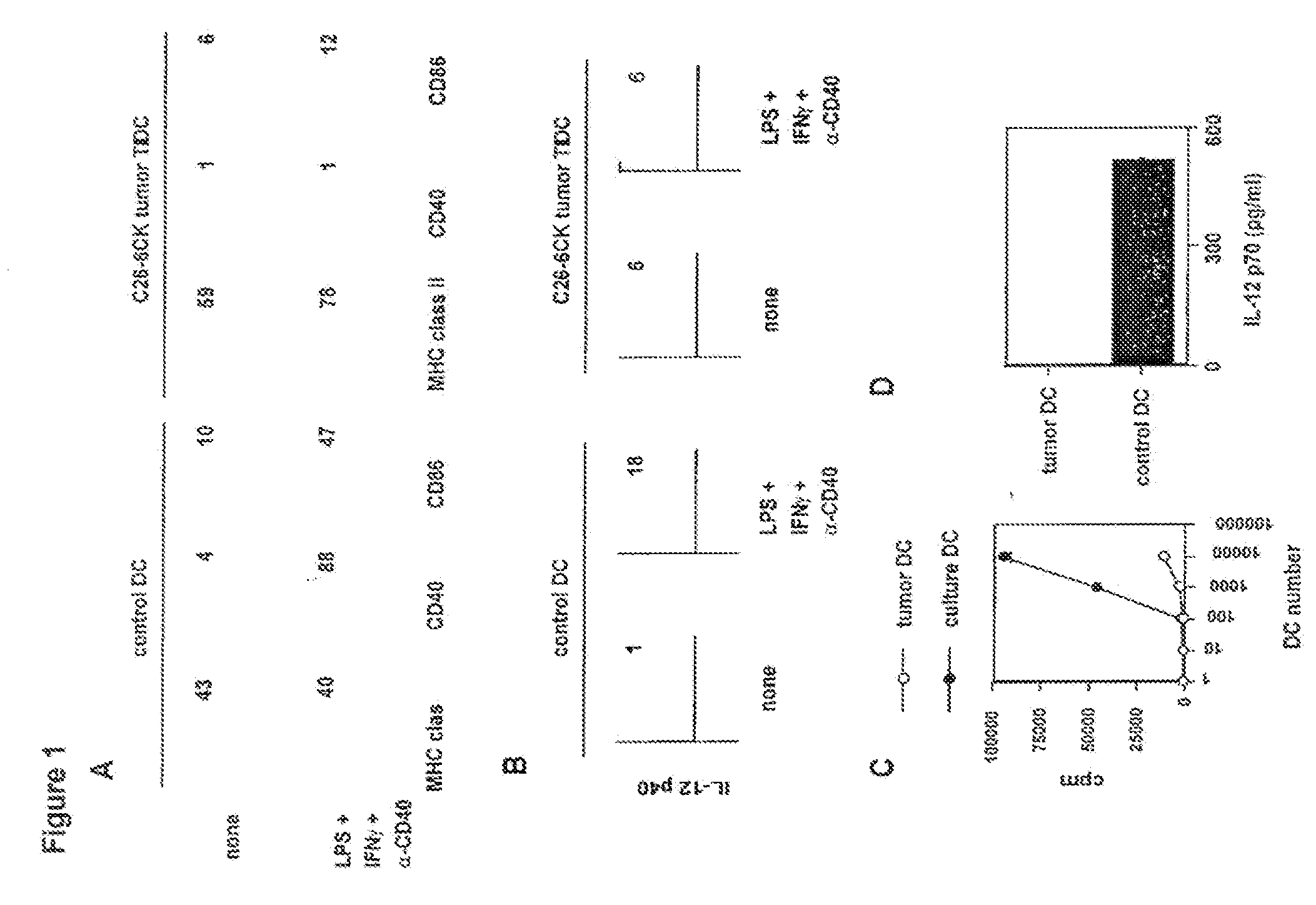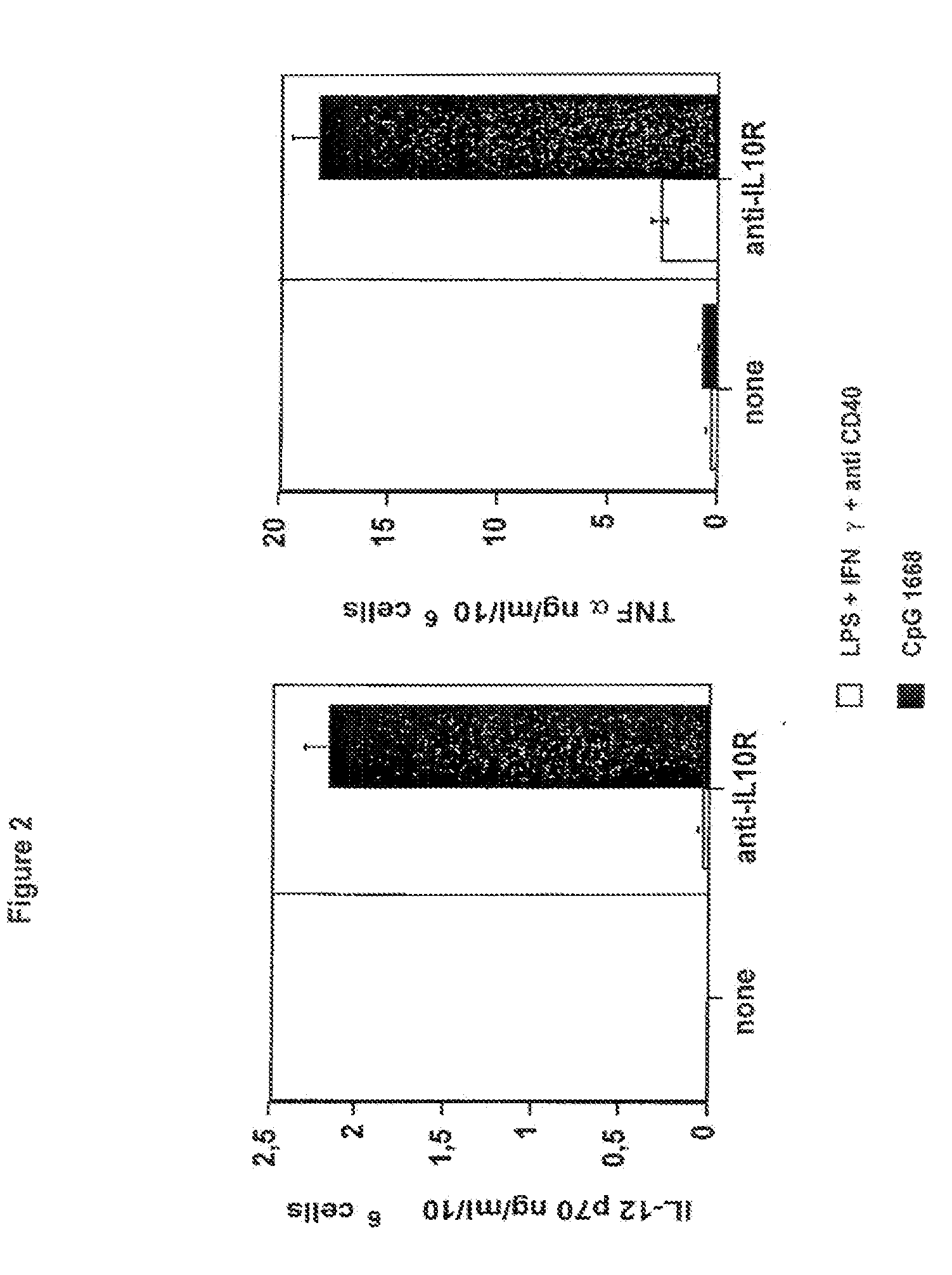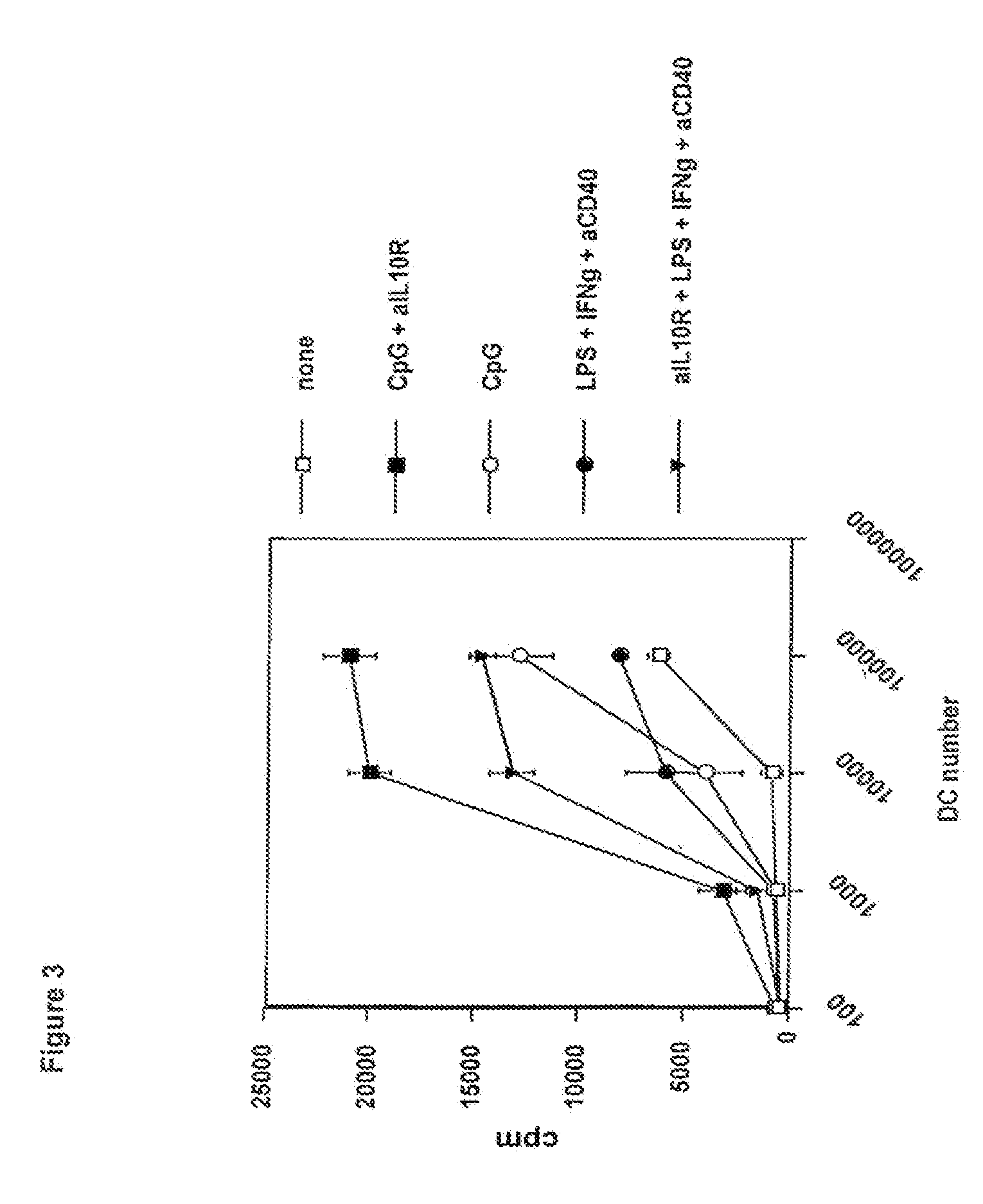Methods for Treating Cancer
a dendritic cell and dendrite technology, applied in the field of manipulation and activation of dendrite cells, can solve the problems of increasing the number of tumor infiltrating dendrite cells amenable to activation, causing patient death, and subsequently dying, and promoting the recruitment of certain subsets of d
- Summary
- Abstract
- Description
- Claims
- Application Information
AI Technical Summary
Benefits of technology
Problems solved by technology
Method used
Image
Examples
examples
[0078]The invention can be illustrated by way of the following non-limiting examples.
example i
C26-6CK Tumor-Infiltrating Dendritic Cells are Unresponsive to the Combination of LPS+Anti-CD40+IFNγ when Compared to Bone Marrow-Derived Dendritic Cells
[0079]In this example, the inventors have shown that DC infiltrating C26-6CK tumors do not respond to LPS+IFNγ+anti-CD40 antibody when considering IL-12 production or stimulatory capacity in mixed leukocyte reaction (MLR), in comparison with bone marrow-derived DC (FIG. 1). All tumor cell cultures were performed in DMEM (Gibco-BRL, Life Technologies, Paisley Park, Scotland) supplemented with 10% FCS (Gibco-BRL), 1 mM hepes (Gibco-BRL), Gentallin (Schering-Plough, Union, N.J.), 2×10−5 M beta-2 mercaptoethanol (Sigma, St Louis, Mo.). All cell cultures were performed at 37° C. in a humidified incubator with 5% CO2. The C26 colon carcinoma and TSA mammary carcinoma were provided by Mario Colombo (Istituto Nazionale per lo Studio e la Cura dei Tumori, Milano, Italy). The B16F0 melanoma and LL2 lung carcinoma were obtained from American T...
example ii
CpG 1668+Anti-IL10R Combination Restored IL-12 and TNFα in C26-6CK Tumor-Infiltrating Dendritic Cells
[0081]In this example, the inventors have shown that combined administration of CpG 1668 and anti-IL10R antibody restored IL-12 and TNFα in C26-6CK tumor-infiltrating dendritic cells (FIG. 2).
[0082]TIDC from C26-6CK tumors were enriched using anti-CD11c magnetic beads. Activation was performed overnight in the presence of GM-CSF 10 ng / ml. Activators were used at: 10 ng / ml LPS, 20 ng / ml IFNγ, 20 μg / ml FKG45.5 agonist anti-CD40 antibody, 5 μg / ml CpG 1668 (sequence: TCC-ATG-ACG-TTC-CTG-ATG-CT, phosphorothioate modified, MWG Biotech, Germany) and 10 μg / ml anti-IL10R (clone 1B13A, Castro et al., 2000, J. Exp. Med. 192: 1529-1534). IL-12 p70 and TNFα were measured in culture supernatants after 24 h stimulation using specific ELISAs.
[0083]Overall, these results indicate that CpG 1668 by itself does not induce IL-12 production by C26-6CK tumor-infiltrating DC. Anti-IL10R have either no effec...
PUM
| Property | Measurement | Unit |
|---|---|---|
| structure | aaaaa | aaaaa |
| soluble | aaaaa | aaaaa |
| length | aaaaa | aaaaa |
Abstract
Description
Claims
Application Information
 Login to View More
Login to View More - R&D
- Intellectual Property
- Life Sciences
- Materials
- Tech Scout
- Unparalleled Data Quality
- Higher Quality Content
- 60% Fewer Hallucinations
Browse by: Latest US Patents, China's latest patents, Technical Efficacy Thesaurus, Application Domain, Technology Topic, Popular Technical Reports.
© 2025 PatSnap. All rights reserved.Legal|Privacy policy|Modern Slavery Act Transparency Statement|Sitemap|About US| Contact US: help@patsnap.com



